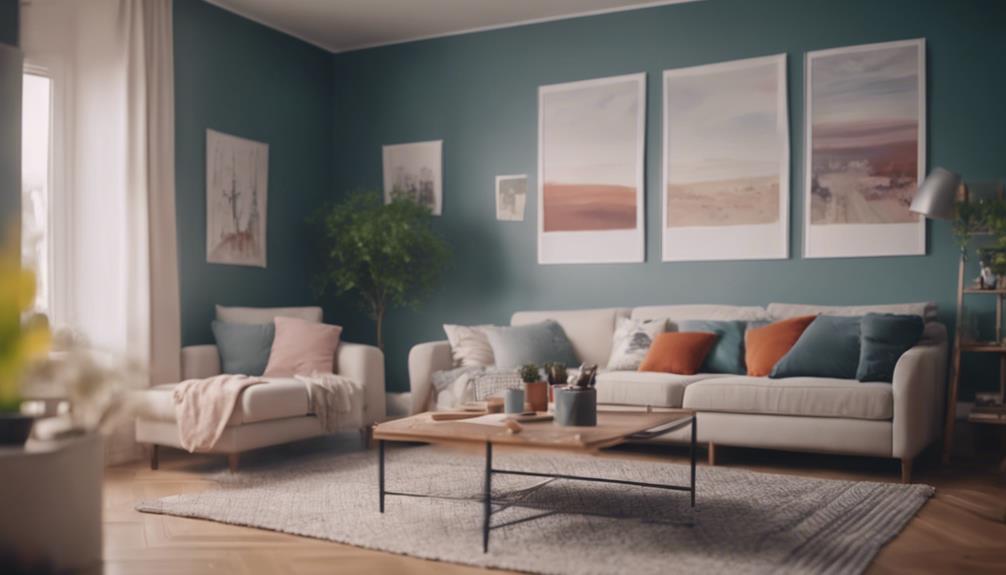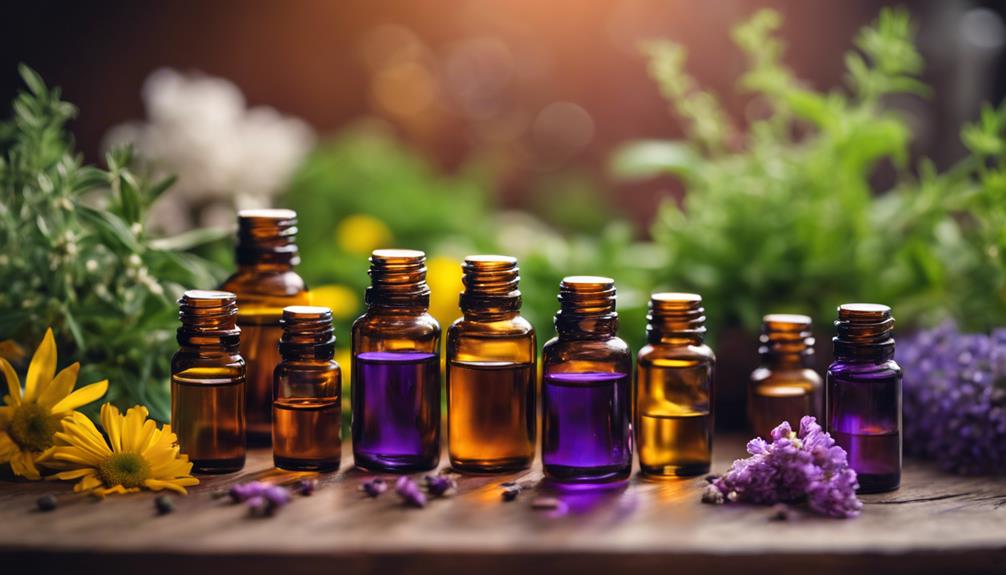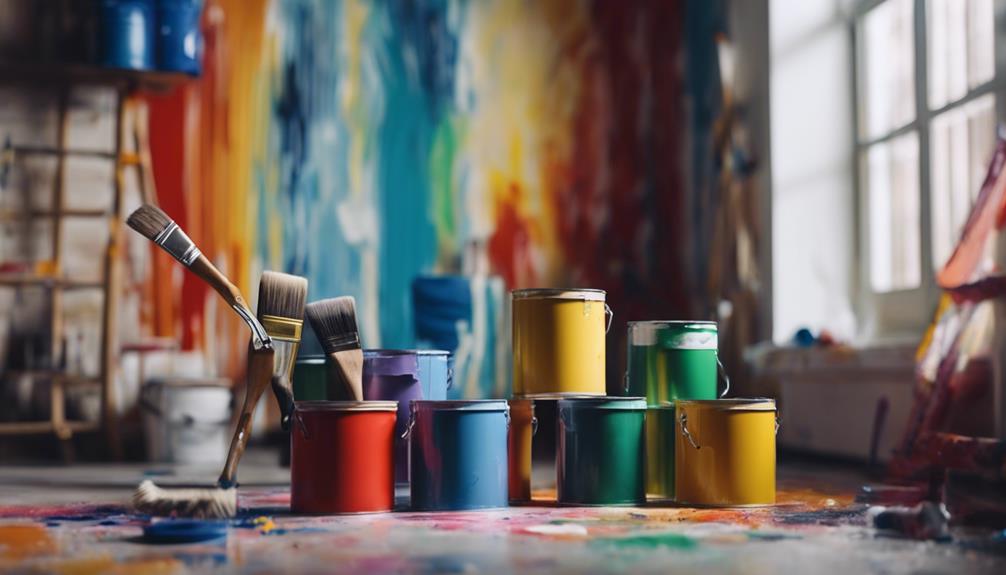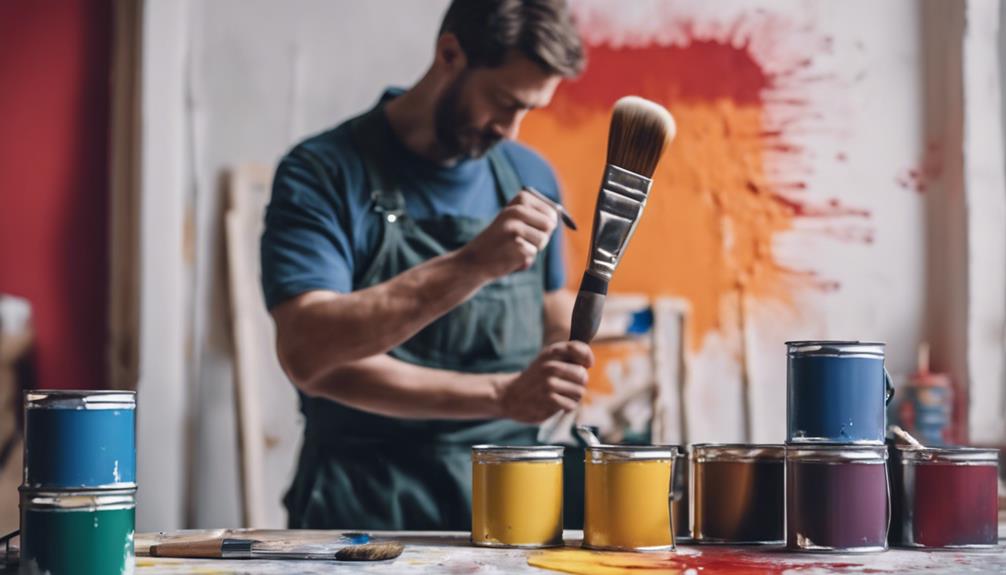You should repaint your interior walls based on usage and room conditions. High-traffic areas like living rooms may need repainting every 5-7 years, while kitchens with grease splatters might need it every 3-4 years. Bathrooms facing high moisture levels should be repainted every 3-4 years. Bedrooms can go 7-10 years for adults and 2-3 years for children. Keep an eye on scuffs and wear on baseboards and trim, repainting every 2-4 years. These general guidelines can help you maintain a fresh look, but specific factors may influence the ideal timeline for repainting different areas.
Key Takeaways
- Bedrooms: Repaint every 7-10 years for adults, 2-3 years for children.
- Kitchens: Repaint every 3-4 years to combat grease and stains.
- Bathrooms: Repaint every 3-4 years due to high moisture levels.
- Living Rooms: Repaint every 5-7 years in high-traffic areas.
- Baseboards/Trim: Repaint every 2-4 years, especially in scuff-prone areas.
Importance of Regular Interior Painting
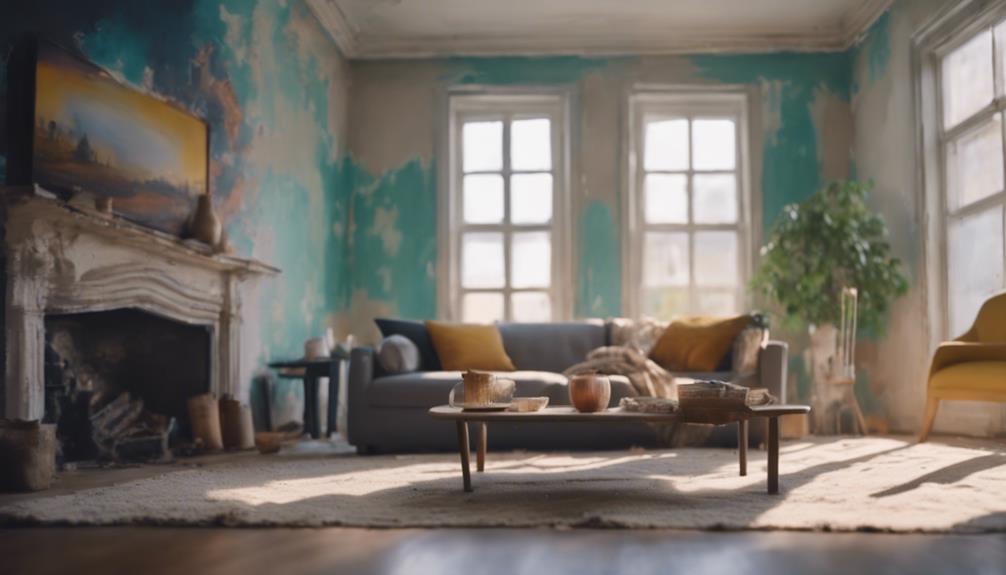
Regularly painting your interior walls is essential for maintaining both the visual appeal and structural integrity of your home. Interior painting not only enhances the aesthetics of your living space but also provides protective benefits against wear and tear. By repainting at appropriate intervals, you can safeguard your walls from damage, ensuring they remain in top condition. This not only contributes to the overall beauty of your home but also plays an important role in mold prevention.
The act of painting your interiors goes beyond just adding color; it acts as a shield, protecting your walls from daily elements that can cause deterioration. Wear and tear are inevitable, but with consistent repainting, you can greatly reduce the impact of these factors. Additionally, maintaining a fresh coat of paint can help preserve the structural integrity of your home, making it a more inviting and safe environment for you and your family.
Factors Influencing Painting Frequency
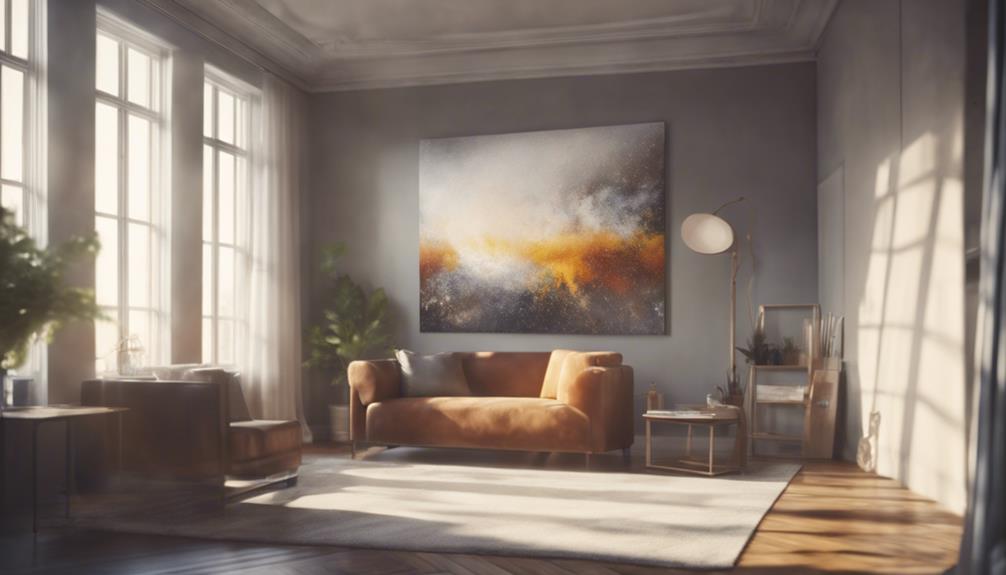
The frequency at which you need to repaint your interior walls depends on factors like the condition of the wall surfaces and your lifestyle habits.
High-traffic areas and rooms exposed to elements typically require more frequent repainting.
Your kitchen, bathroom, and living room might need a fresh coat of paint sooner than other rooms based on their specific challenges and usage patterns.
Wall Surface Condition
Factors like visible scuffs from high-traffic areas, wear from daily activities, and pet activity can influence how often you may need to repaint your interior walls. Here are some specific considerations to keep in mind:
- High-traffic areas with constant movement can lead to more scuff marks and wear on your walls, requiring more frequent repainting.
- Daily activities, especially those involving children or heavy use of certain areas, can contribute to faster deterioration of the paint.
- Pets, sunlight exposure, and humidity levels can also impact the condition of your walls, potentially necessitating more frequent touch-ups or repainting.
Lifestyle and Habits
Considering your lifestyle choices and daily habits is crucial when determining how frequently you should repaint your interior walls. Factors like high traffic, pets, and room usage play a significant role in the repainting frequency.
Rooms like living rooms, exposed to regular use, might need repainting every 5-7 years due to lifestyle impacts. Spaces like children's rooms, prone to active play, may require repainting every 2-3 years based on habits. Kitchens, subject to cooking grease, could need repainting every 3-4 years due to lifestyle factors.
Understanding how your daily routines and room activities affect your walls will help you decide when it's time to refresh the paint to maintain a fresh and vibrant interior.
Recommended Maintenance Intervals by Room
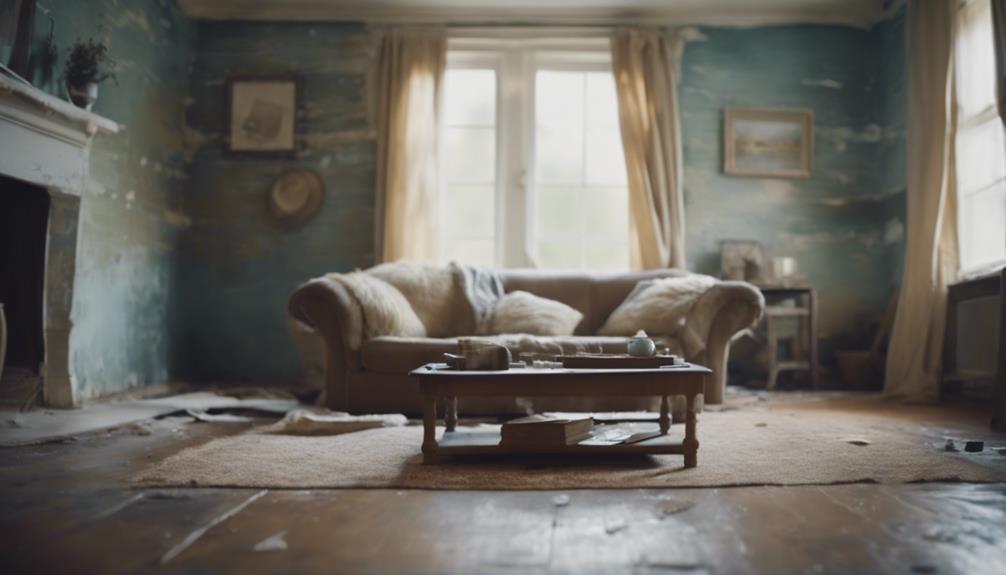
Maintaining interior walls involves adhering to specific timeframes for repainting various rooms in your home. Different spaces in your house require different levels of maintenance to keep them looking fresh and vibrant.
Here are some recommended maintenance intervals for painting different rooms:
- Kitchen: Often used and prone to grease and food splatters, kitchens should be repainted every 4-5 years to maintain a clean and inviting atmosphere.
- Hallways: High traffic areas like hallways are more susceptible to scuffs and marks, necessitating repainting every 2-3 years to keep them looking neat and well-maintained.
- Baseboards and Trim: These areas are prone to wear and tear from daily activities. Repainting them every 2-3 years can help address any scuffs or marks, enhancing the overall appearance of your rooms.
Factors Impacting Painting Timeline
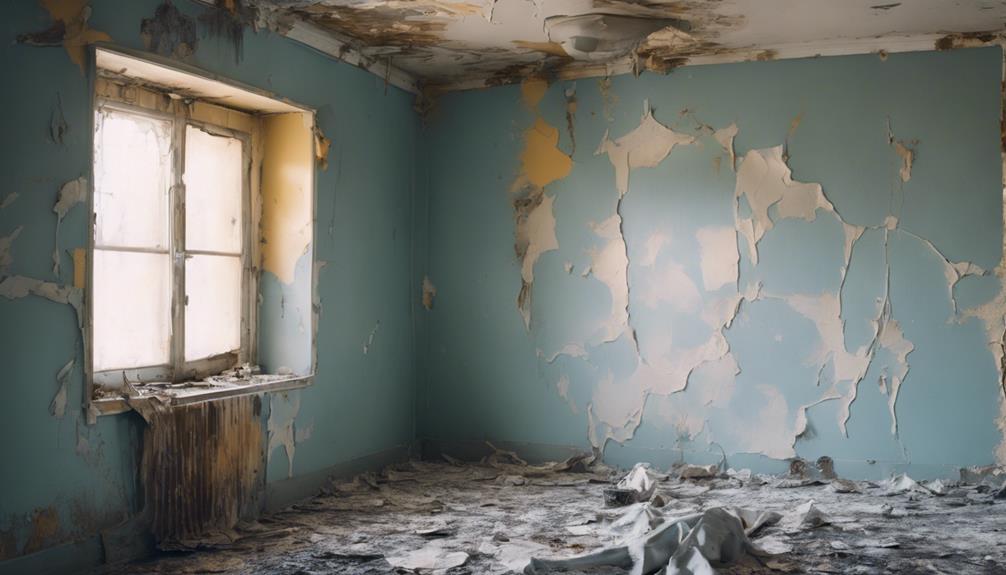
To determine the ideal painting timeline for your interior walls, assess the level of activity and traffic in each room. High-traffic areas like living rooms may need to be repainted every 5-7 years due to accelerated wear. Factors such as room usage, presence of kids and pets, and daily activities all influence how often you should paint your interior walls.
Bedrooms usually require repainting every 2-3 years for children's rooms and 7-10 years for adult bedrooms. Kitchens and bathrooms, being high-traffic areas, typically need repainting every 3-4 years to maintain a fresh look.
Keep in mind that quality paint jobs can last up to 10 years with proper maintenance, but this can vary based on room-specific considerations. By considering these factors, you can create a painting schedule that keeps your interior walls looking fresh and vibrant for years to come.
Longevity of Interior Paint
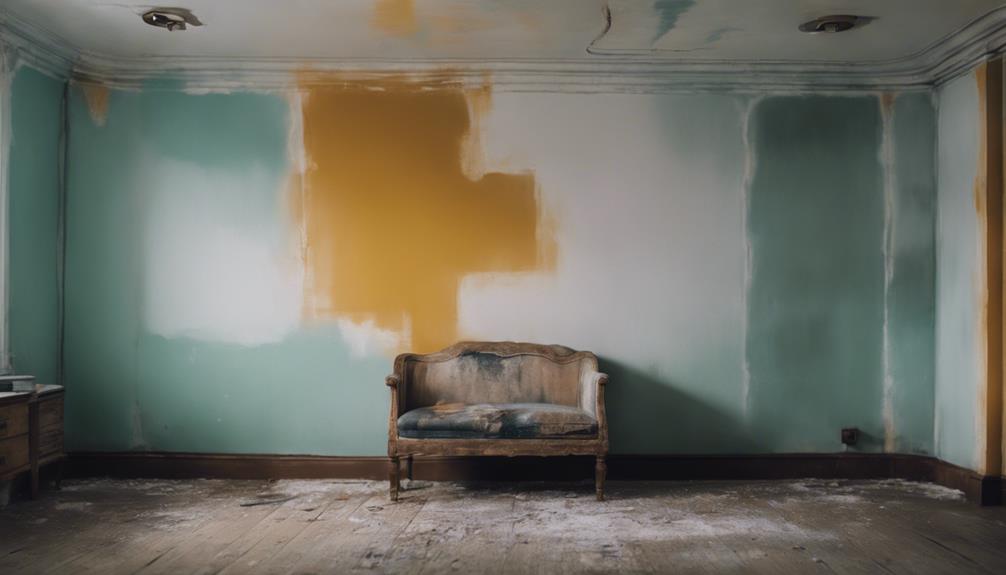
Interior paint can last up to a decade with good care. Proper maintenance includes repainting high-traffic areas every 2-4 years.
Consider factors like coastal exposure impacting paint longevity.
Paint Durability Factors
Factors such as paint quality, room usage, and prep work greatly affect the longevity of your interior paint job. To understand how these factors impact your paint job's durability, consider the following:
- Quality Paint: Investing in high-quality paint can prolong the lifespan of your interior walls considerably.
- Room Usage: Rooms with high foot traffic or more frequent use may require repainting sooner than less-used spaces.
- Prep Work: Proper preparation, including cleaning, priming, and repairing any damage, is essential for ensuring the paint adheres well and lasts longer.
Maintenance Tips
Regular cleaning and maintenance play an essential role in extending the lifespan of your interior paint job. To maintain your interior paint, clean walls regularly to prevent buildup and damage.
Keep humidity levels stable to avoid cracking or peeling. Address scuffs promptly to prevent further deterioration. Shield walls from direct sunlight to preserve paint colors and finish.
Properly prepare surfaces before painting by priming and fixing imperfections for a long-lasting result. These practices can help you space out maintenance intervals and avoid the hassle of frequent repainting.
For expert painting services and advice on maintaining your interior paint's longevity, consider consulting professionals in the field.
Repainting Frequency
To maintain a fresh and vibrant interior, consider repainting your walls every few years depending on the room's usage and specific needs. Here's a guideline to help you plan your repainting schedule:
- Dining rooms need to be repainted every 5-7 years due to frequent use and potential stains from meals.
- Bedrooms, especially those of children, may require repainting every 2-3 years to keep up with the wear and tear common in these spaces.
- Kitchens and bathrooms should be repainted every 3-4 years to uphold a fresh and clean appearance amidst cooking splatters and humidity.
Extending Interior Paint Lifespan
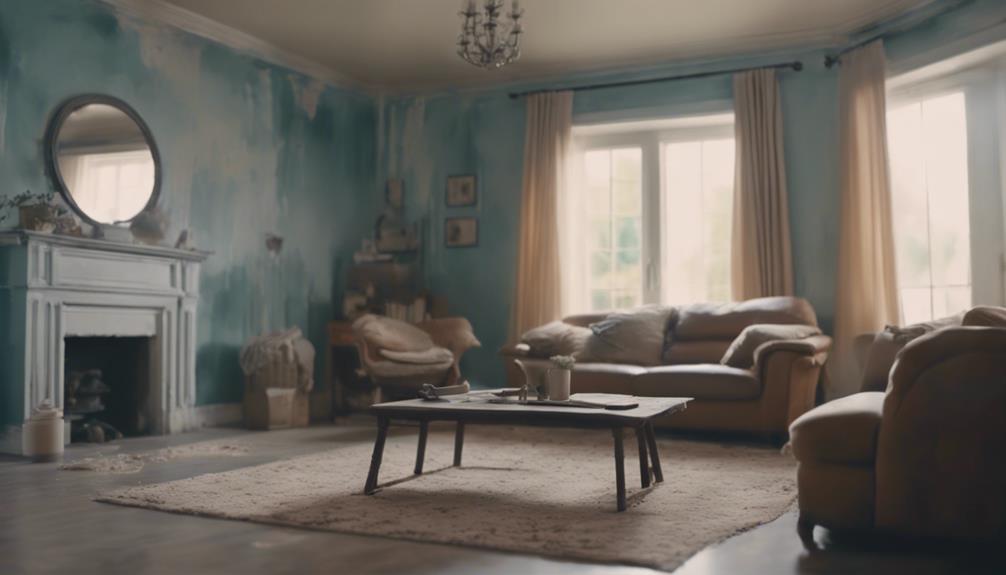
Extending the lifespan of your interior paint can be achieved through regular cleaning, humidity control, and promptly addressing any scuffs that may occur. By implementing these maintenance practices, along with using quality paint and considering factors like room usage, you can help prolong the time between repainting intervals.
Protecting your walls from direct sunlight exposure and ensuring proper preparation before painting are also vital steps in maintaining durable finishes. A well-executed paint job with high-quality materials and regular upkeep can last up to 10 years, greatly reducing the frequency of repainting.
Interior Wall Maintenance Tips
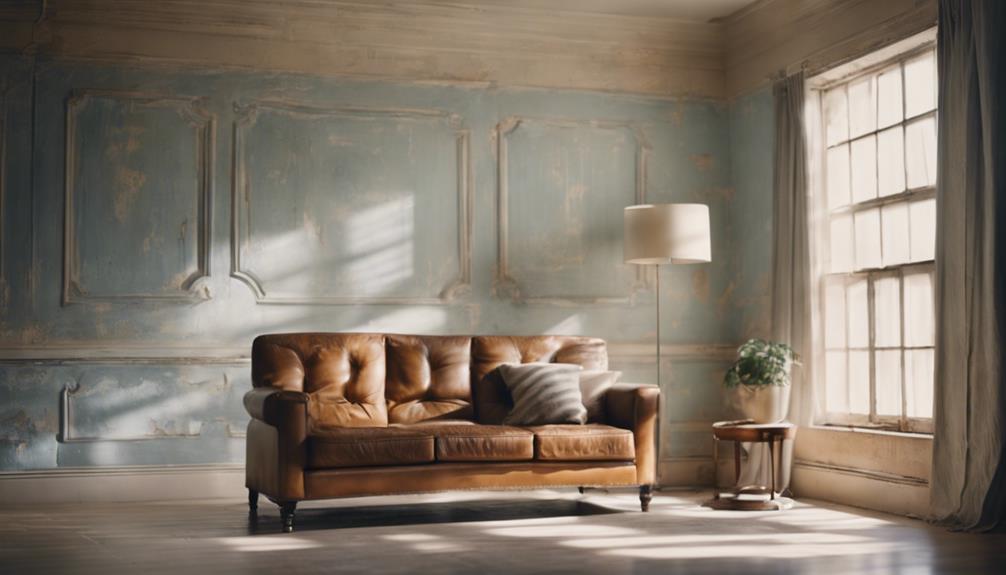
To uphold your interior walls, selecting high-quality paint that can withstand wear and tear is crucial. Establishing a maintenance schedule will help you stay on track with repainting tasks, ensuring your walls always look fresh and well-kept.
Consider the specific needs of each area in your home to determine how often they should be repainted.
Paint Quality
Invest in quality primer and guarantee proper drywall prep to ensure a durable interior paint job. Using high-quality paint materials can greatly extend the lifespan of your interior wall paint. Here are three key points to keep in mind:
- Durability: Quality paints are more resistant to wear and tear, reducing the need for repainting.
- Longevity: Investing in premium paint products can lead to a more durable and aesthetically pleasing interior wall finish.
- Professional Finish: Adequate surface preparation before painting helps maintain a long-lasting and professional look.
Maintenance Schedule
For effective interior wall maintenance, establish a routine schedule for repainting different areas of your home based on usage and wear. The kitchen typically needs repainting every 4-5 years to maintain a fresh look and address wear and tear.
Hallways, with high traffic and scuff marks, should be repainted every 2-3 years. Baseboards and trim also benefit from a fresh coat every 2-3 years to keep them looking clean.
Bedrooms may vary in the frequency of repaints, ranging from 2-10 years based on individual usage. Ceilings generally stay fresh for longer but can benefit from a new coat every 7-10 years to brighten up the room.
Setting up a maintenance schedule will help you keep your walls looking their best.
Interior Painting Services Overview
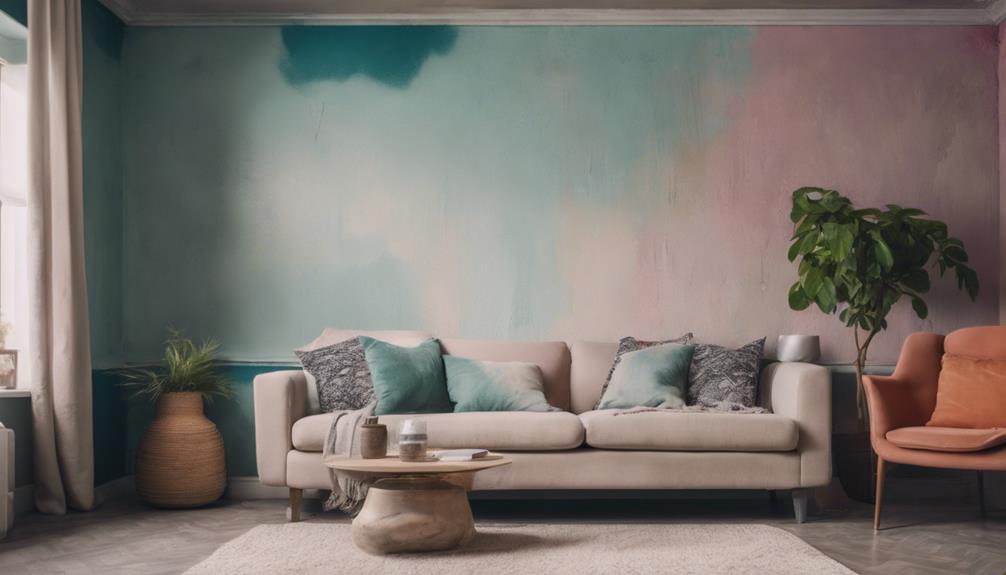
When considering interior painting services, explore the wide range of offerings provided by Five Star Painting. They specialize in interior painting, drywall repair, and wallpaper removal services.
All residential painting services by Five Star Painting come with a two-year warranty, guaranteeing quality and customer satisfaction. The lifespan of a paint job can vary based on the quality of materials and prep work. To guarantee longevity for your interior walls, quality primer and proper drywall preparation are essential.
Contact Five Star Painting for a free estimate on your interior painting needs. By utilizing quality materials and expert techniques, Five Star Painting can help you achieve a durable and visually appealing paint job for your home. Whether you need a simple refresh or a complete transformation, their services are designed to meet your interior painting requirements efficiently and professionally.
Weather's Impact on Interior Paint
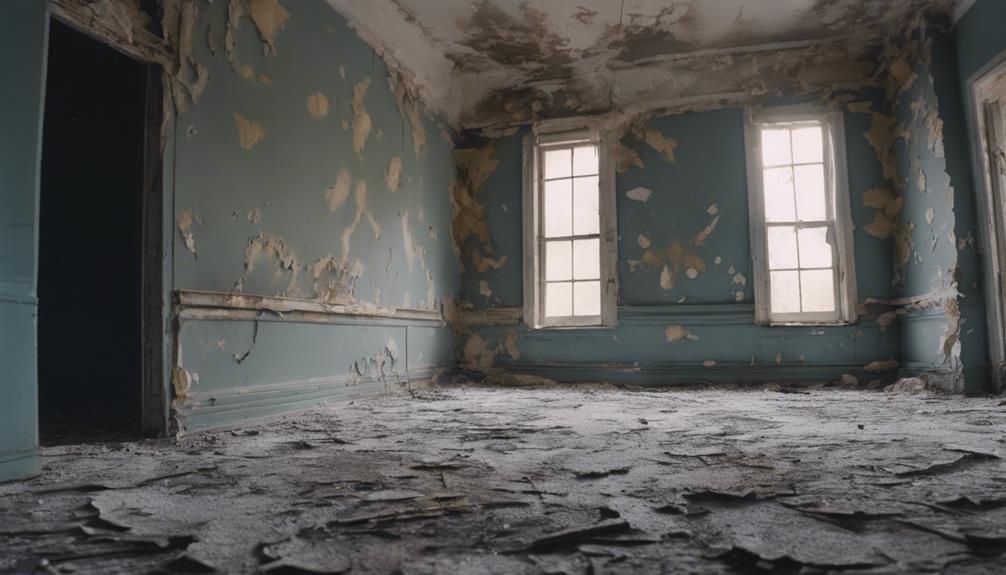
Living in coastal areas may expose your interior paint to salt, potentially affecting its longevity and vibrancy over time. Salt exposure near beaches can dull the appearance of interior paint colors, especially if the paint is of lower quality. High-quality paint tends to be more resilient to environmental factors like salt exposure.
Weather conditions play a significant role in how well your interior paint holds up, particularly in areas near bodies of water. When planning for interior painting maintenance, it's important to take into account your geographical location and the climate impact it may have on your paint. By being aware of these factors, you can make informed decisions about when to repaint and how to best protect your interior walls from the effects of weather and salt exposure.
How Often to Repaint Specific Areas
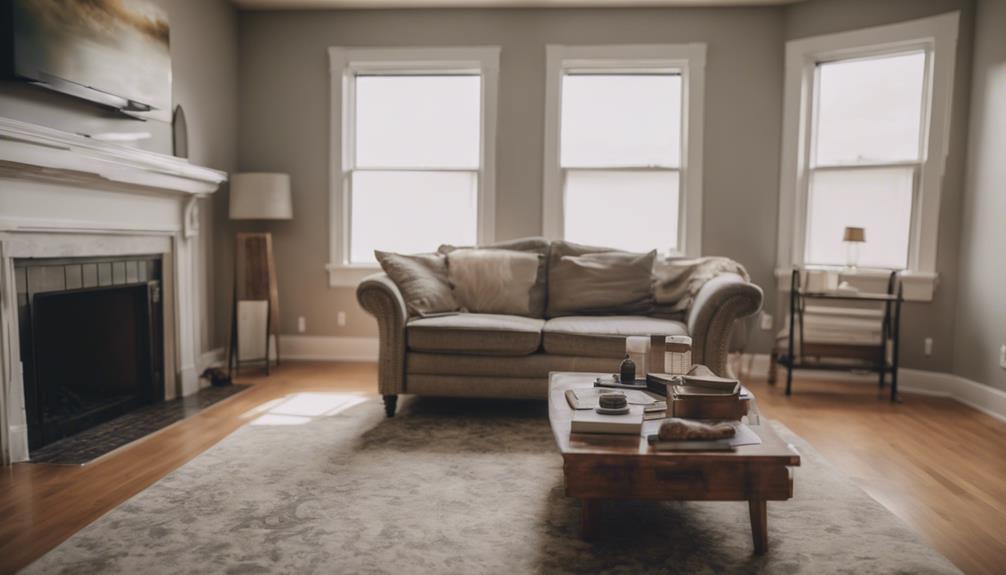
Maintaining the interior of your home involves repainting specific areas at recommended intervals to preserve their appearance and durability. Here's how often you should repaint different areas:
- Bedroom Paint: Bedrooms typically need repainting every 7-10 years for adults and 2-3 years for children due to varying wear and tear.
- Kitchen Walls: Kitchens should be repainted every 3-4 years to combat grease and stains from daily use.
- Bathroom Paint: Bathrooms require repainting every 3-4 years to withstand high moisture levels and maintain a fresh appearance.
It's also essential to keep in mind the following areas:
- Living Rooms: High-traffic living rooms benefit from repainting every 5-7 years to refresh the space and address wear.
- Baseboards and Window Trim: These should be repainted every 2-4 years, especially in high-traffic areas prone to scuffs and marks.
Frequently Asked Questions
How Often Should You Paint the Interior Walls of Your House?
You should paint the interior walls of your house every few years to keep them looking fresh and clean. The frequency depends on the room's usage; high-traffic areas like living rooms and kitchens may need repainting every 3-7 years, while bedrooms or bathrooms could go longer between repaints.
Regular maintenance helps maintain the aesthetics of your home and protects the walls from wear and tear.
How Long Does Interior Paint Last on the Wall?
When you wonder how long interior paint lasts on walls, remember it's like watching a pot of paint dry—figuratively!
With proper care, quality paint jobs can endure for about a decade. Factors like room use, paint quality, and prep work play crucial roles in longevity.
Think of sunlight exposure, humidity levels, and material quality as essential painters determining the lifespan. Keep these in mind for walls that stand the test of time.
How Often Does the Average Person Paint Their House?
You repaint your interior walls every 5-7 years on average to keep them looking fresh and appealing. Factors like room usage and personal preferences influence how often you'll need to paint.
High-traffic areas, such as living rooms, may need more frequent touch-ups. Regular maintenance and touch-ups can help prolong the lifespan of your paint job, reducing the need for full repaints.
Consulting with professionals can give you personalized advice on when to repaint based on your unique situation.
How Long Should a Good Interior Paint Job Last?
A good quality interior paint job should last up to 10 years with proper maintenance. Factors like paint quality, room usage, and preparation work impact longevity. High-traffic areas may need repainting sooner.
Regular cleaning, humidity control, and prompt scuff repair help guarantee paint life. Professional painting services secure a durable finish. Maintaining these practices can help you enjoy a long-lasting and fresh-looking interior paint job for years to come.
Conclusion
To sum up, staying current with regular interior painting is like giving your walls a rejuvenating makeover to uphold their vibrant appearance and protect them from wear and tear.
By following recommended maintenance intervals and considering factors that impact painting frequency, you can guarantee your home looks its best for years to come.
Remember, a fresh coat of paint not only enhances your walls but also adds a touch of elegance to your living space.
